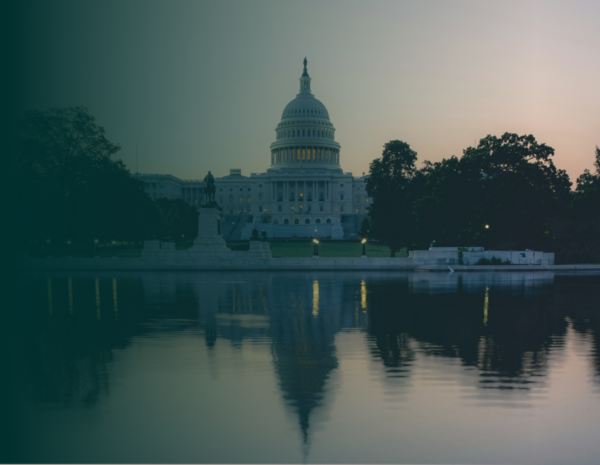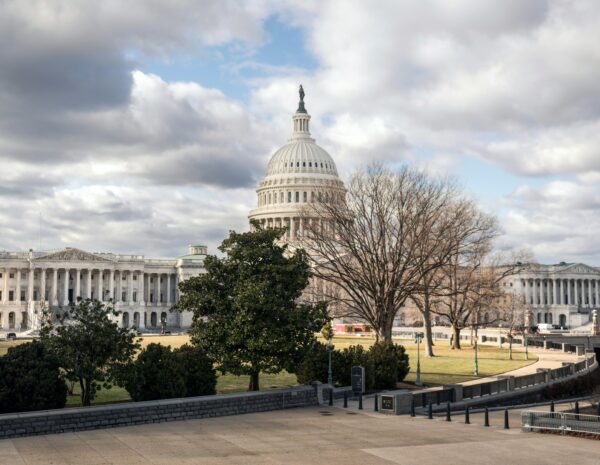Who makes the laws that govern your life? If you live in the United States, more than one government is in charge. To stay on top of policy changes and understand state vs. federal powers, it helps to know which level of government has the power to make laws in different domains.
The United States uses a system called federalism, which is the division of powers between national and regional governments. This allows states to test ideas independently. They can act as “laboratories of democracy,” as U.S. Supreme Court Justice Louis Brandeis put it.
After the United States declared its independence in 1776, the Continental Congress drafted the Articles of Confederation and Perpetual Union. This became the new country’s basis of government. The document granted much power to the 13 states and very little to Congress, making the national government ineffective and creating conflict among states. State delegates later met in 1787 to create the Constitution of the United States. This new Constitution established a federalist system with more balanced state vs. federal powers.
This didn’t settle the matter, though. Throughout the country’s history, the state and federal governments of the United States have struggled over power. Key U.S. Supreme Court decisions expanded federal authority through the American Civil War, before restricting it again in the later 1800s and early 1900s. The “New Deal” strengthened the government again in the 1930s, while changes in the 1980s returned some power to the states.
The one constant is the U.S. Constitution — and even that can change with amendments. One amendment in particular is crucial to dividing federal and state powers.
The Tenth Amendment
The Tenth Amendment to the U.S. Constitution is the last amendment in the Bill of Rights, ratified in 1971. It reads, “The powers not delegated to the United States by the Constitution, nor prohibited by it to the States, are reserved to the States respectively, or to the people.”
This limits the federal government to the specific powers outlined in the Constitution. The U.S. Congress also can pass any laws that are “necessary and proper” to carry them out.
Enumerated Powers
Enumerated, or expressed, powers are those listed in the Constitution as belonging to the federal government. Examples of Congress’ enumerated powers include:
- Taxation and levying tariffs
- Borrowing money
- Regulating foreign and interstate commerce (between states)
- Establishing naturalization rules
- Establishing bankruptcy rules
- Coining money
- Creating post offices and post roads
- Securing intellectual property
- Creating federal courts below the Supreme Court
- Declaring war
- Raising and supporting an army
- Providing and maintaining a navy
- Calling forth a militia to execute federal laws, suppress insurrections, and repel invasions
The federal government also holds powers that aren’t listed in the Constitution but are needed to carry out other powers. According to Article 1, Section 8, “The Congress shall have Power… to make all Laws which shall be necessary and proper for carrying into Execution the foregoing Powers, and all other Powers vested by this Constitution in the Government of the United States, or in any Department or Officer thereof.” In McCulloch v. Maryland, the Supreme Court ruled that this “Necessary and Proper Clause” gives the federal government certain implied powers.
There are many implied powers, including:
- Creating a national bank
- Setting a minimum wage
- Creating labor laws
- Regulating immigration
- Creating a military draft
The Supreme Court plays a large role in defining these powers when it tests whether federal laws are constitutional.
Reserved Powers
Reserved powers are any powers that state governments keep under the Tenth Amendment. States hold any power that the Constitution has not assigned to the federal government or disallowed. Examples include:
- Creating local governments
- Regulating intrastate commerce (within a state)
- Creating and maintaining public schools
- Protecting public health and safety
- Regulating marriage and divorce
- Holding elections
The federal government may not directly control these areas, but it can give incentives for states to do what it wants through grants and mandates. Grants from the federal government to the states may come with strict instructions for how to use the money. This has influenced welfare programs and public education. Mandates put conditions on federal funding that may not be related to how those funds are spent. For example, Congress has tied highway funding to setting the minimum age for purchasing alcohol at 21 years.
Division of State vs. Federal Powers
The division of powers between state and federal governments isn’t always clear-cut. Some belong only to the federal government or are reserved to the states, while other powers are shared between them.
In 1960, political researcher Morton Grodzins criticized an old view of U.S. federalism as a “layer cake” with clearly divided parts. He said modern federalism was more like a “marble cake,” made up of different parts that swirl together. Even so, some defined boundaries still exist.
Exclusive Federal Powers
State governments cannot use exclusive powers belonging to the federal government without federal permission. Several enumerated powers are exclusive, including:
- Coining money
- Taxing imports and exports
- Declaring war
- Creating treaties and foreign agreements
- Regulating interstate commerce
Powers like these help the nation act as a union, especially in the areas of trade and foreign relations. Individual states cannot create their own currency or set up their own trade agreements. They also cannot go to war or sign treaties on their own. On official business, the rest of the world interacts with the United States of America as a whole.
These powers also keep states from creating barriers to trade with each other, as they did under the Articles of Confederation.
Concurrent Powers
Both federal and state governments share certain powers called concurrent powers. Examples include:
- Taxation
- Establishing banks
- Administering courts
- Making and enforcing laws
- Spending money for the general welfare of the public
What happens when Congress and state legislatures use their concurrent powers to pass laws that don’t agree? Congress can write an express provision into a bill saying that its law preempts any state laws on the subject. Even without an express preemption provision, federal laws take priority over state laws if the two come into conflict.
This is due to the “Supremacy Clause” in Article VI of the Constitution. It names the U.S. Constitution as “the supreme law of the land,” along with federal laws written under its authority. The Supreme Court ruled in McCulloch v. Maryland that this allows for federal preemption over state law.
Balancing State vs. Federal Powers: Current Issues
Power struggles between the federal and state governments continue to this day. They likely always will.
Many state laws now conflict with federal law on the topic of marijuana, or cannabis. The production, sale, possession, and use of marijuana is illegal under federal law. The federal government has claimed authority over the drug trade through its power to control interstate commerce. Meanwhile, states are pushing back to claim their own authority over intrastate commerce and public safety. Starting in 1996, individual states began legalizing marijuana for medical use. They started to make recreational use legal in 2012. As of March 2024, 24 states have legalized recreational cannabis and another 14 allow it for medical purposes.
In recent years, immigration has become another common battleground for state vs. federal powers. The Constitution gives the federal government the power to make and enforce naturalization rules, regulate foreign commerce, and declare war on foreign nations. These powers form the basis of regulating immigration as an implied power. Some states still try to restrict immigration or increase border control on their own. Other state and local governments choose not to enforce some federal immigration laws.
Tensions also abound in healthcare and public health. Some states have fought federal mandates in the Affordable Care Act, saying they overstep into state powers. During the COVID-19 pandemic, federal authority over critical nationwide issues collided with state authority over public safety, schools, and business within a state. Many of these tensions are still not resolved.
Get Started With Plural
Are you a concerned constituent interested in learning more about and monitoring the U.S. government? Create a free Plural account today to:
- Access public policy data from all 50 states, Washington, D.C., Puerto Rico, and U.S. Congress
- Search, view, and track any bill
- Search and view legislator profile pages



